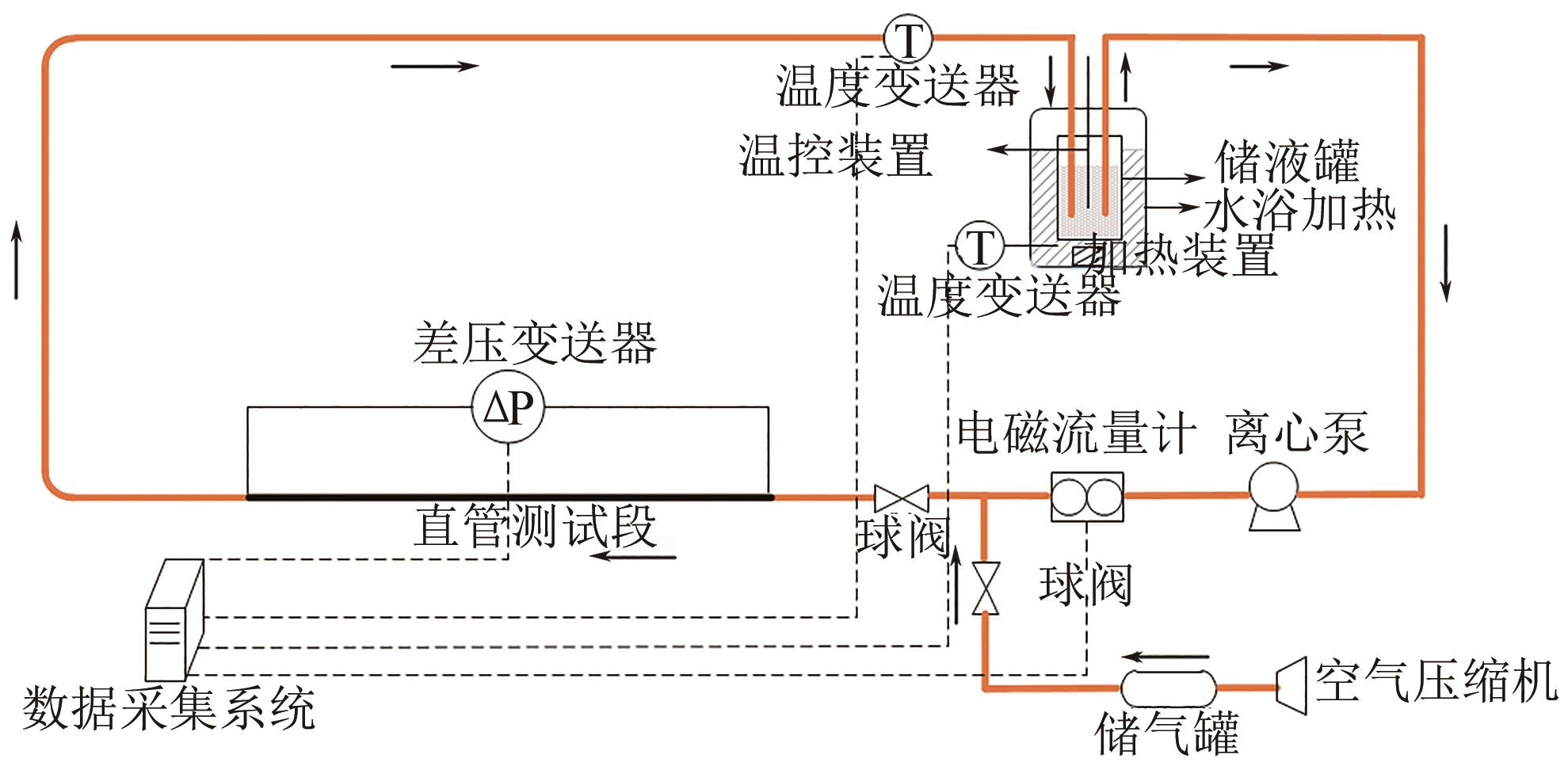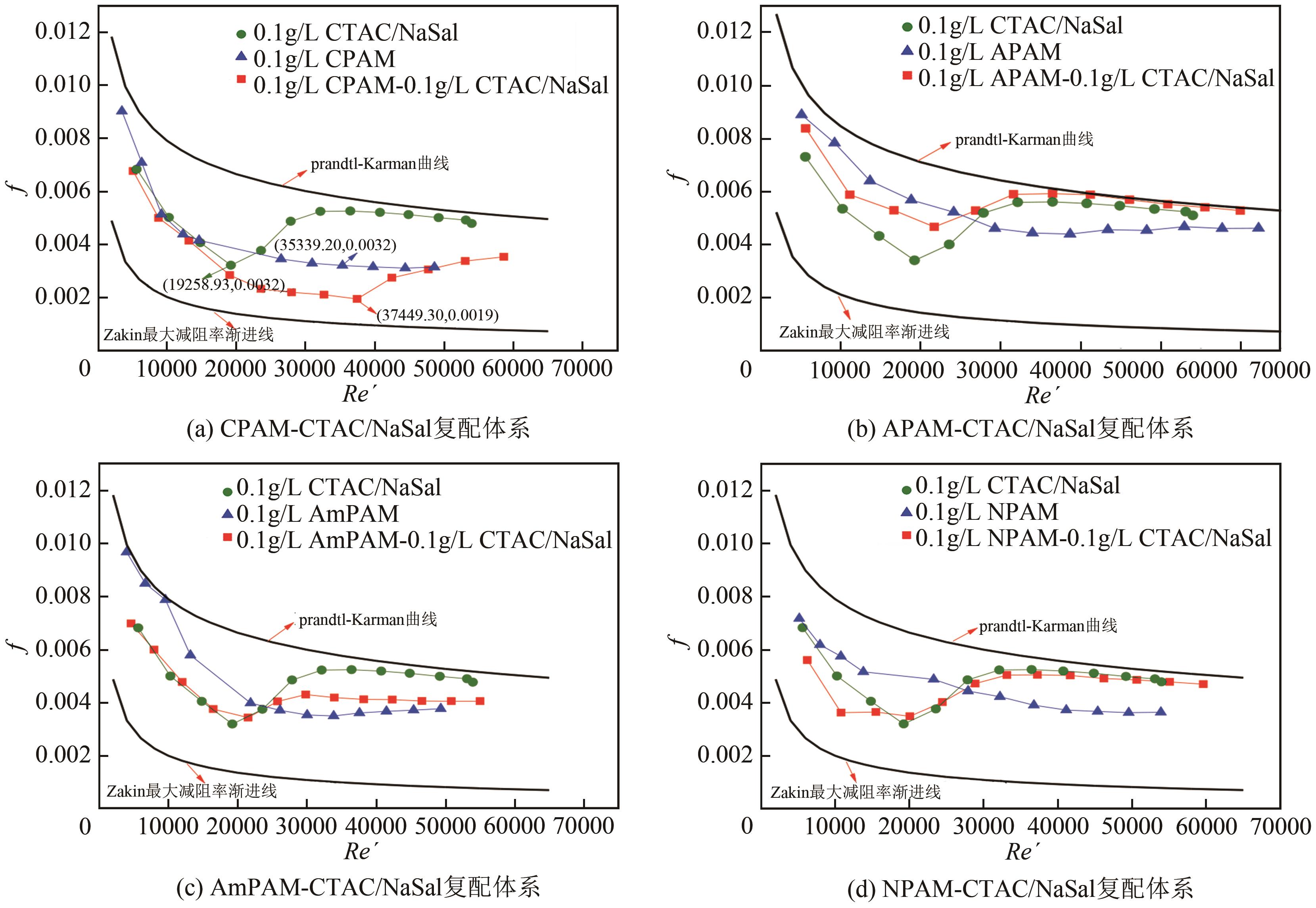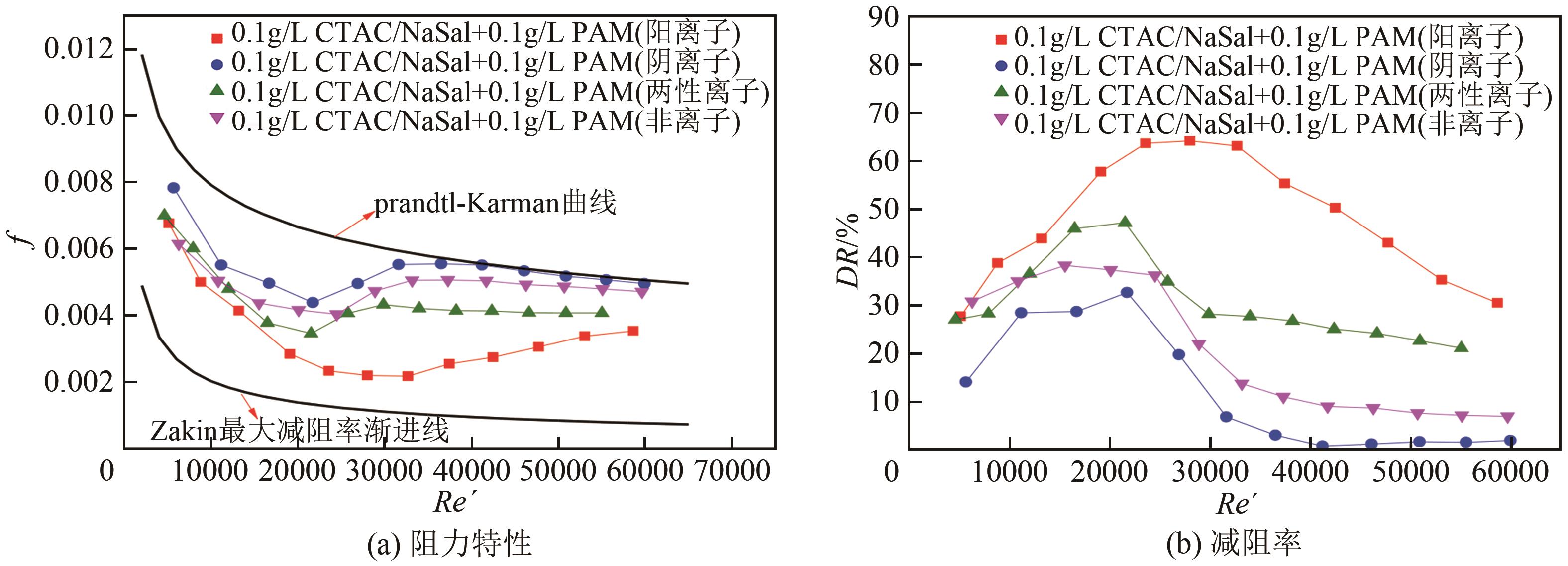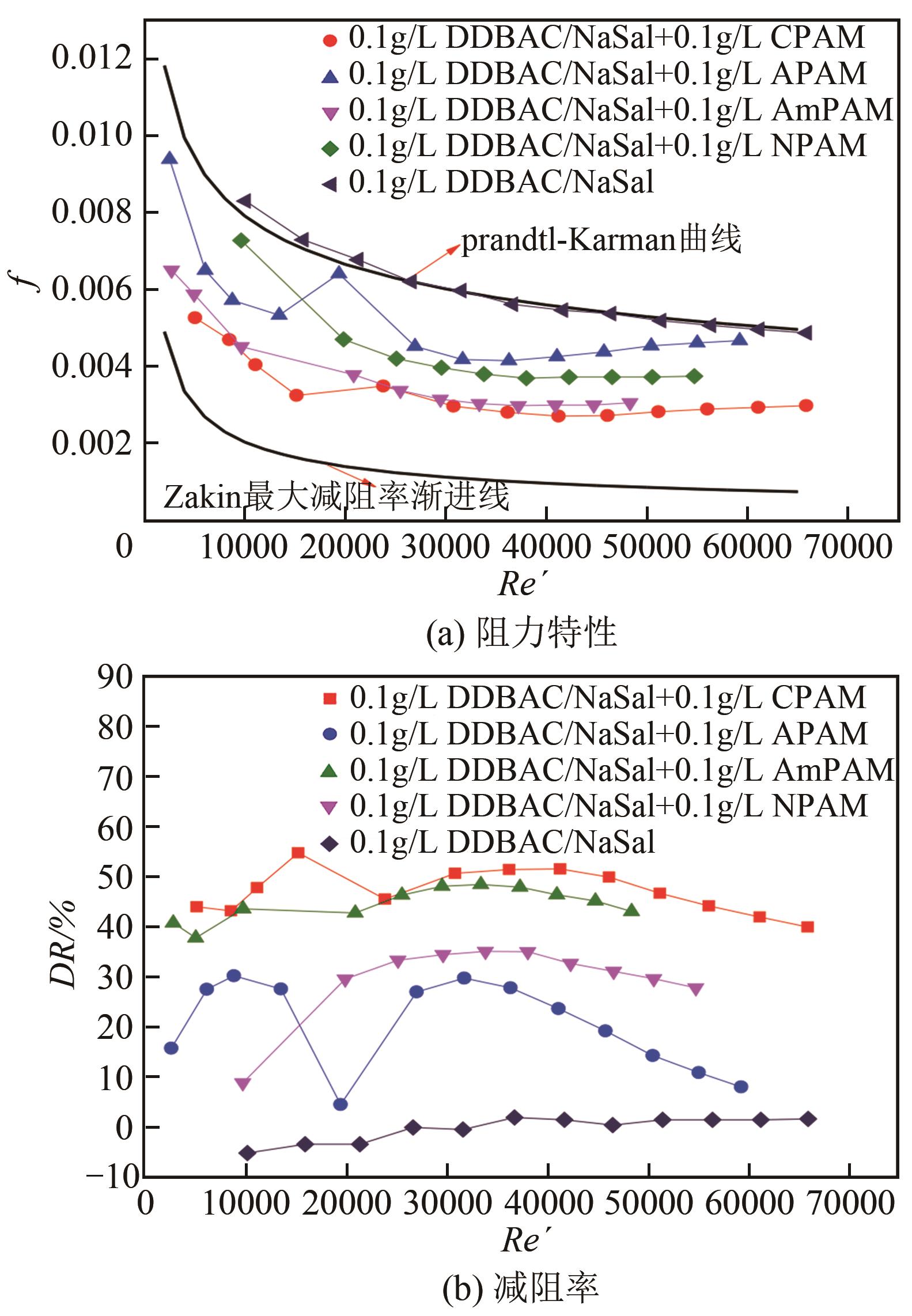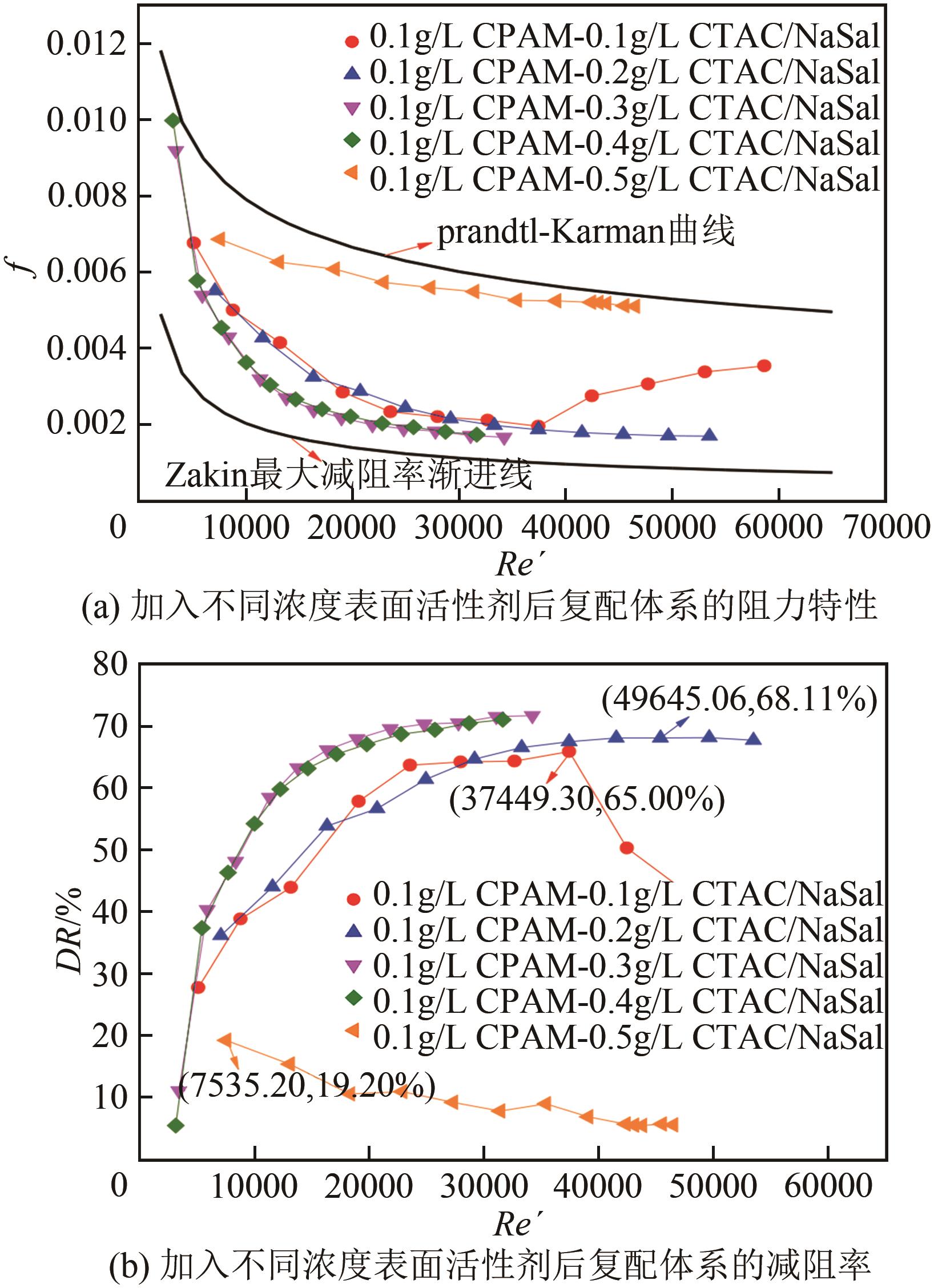| 1 |
BEWERSDORFF H W, OHLENDORF D. The behaviour of drag-reducing cationic surfactant solutions[J]. Colloid and Polymer Science, 1988, 266(10): 941-953.
|
| 2 |
OHLENDORF D, INTERTHAL W, HOFFMANN H. Surfactant systems for drag reduction: physico-chemical properties and rheological behaviour[J]. Rheologica Acta, 1986, 25(5): 468-486.
|
| 3 |
ABUBAKAR A, AL-WAHAIBI T, AL-WAHAIBI Y, et al. Roles of drag reducing polymers in single-and multi-phase flows[J]. Chemical Engineering Research and Design, 2014, 92(11): 2153-2181.
|
| 4 |
HADRI F, BESQ A, GUILLOU S, et al. Temperature and concentration influence on drag reduction of very low concentrated CTAC/NaSal aqueous solution in turbulent pipe flow[J]. Journal of Non-Newtonian Fluid Mechanics, 2011, 166(5/6): 326-331.
|
| 5 |
WEI J J, WANG J F, ZHANG C W, et al. Combined effects of temperature and Reynolds number on drag-reducing characteristics of a cationic surfactant solution[J]. The Canadian Journal of Chemical Engineering, 2012, 90(5): 1304-1310.
|
| 6 |
魏进家, 黄崇海, 徐娜. 表面活性剂湍流减阻研究进展[J]. 化工进展,2016, 35(6): 1660-1675.
|
|
WEI Jinjia, HUANG Chonghai, XU Na. Research progress concerning turbulent drag reduction of surfactant solution[J]. Chemical Industry and Engineering Progress, 2016, 35(6): 1660-1675.
|
| 7 |
MOHSENIPOUR A A, PAL R. The role of surfactants in mechanical degradation of drag-reducing polymers[J]. Industrial & Engineering Chemistry Research, 2013, 52(3): 1291-1302.
|
| 8 |
LIU D J, LIU F, ZHOU W J, et al. Molecular dynamics simulation of self-assembly and viscosity behavior of PAM and CTAC in salt-added solutions[J]. Journal of Molecular Liquids, 2018, 268: 131-139.
|
| 9 |
MOHSENIPOUR A A, PAL R. Drag reduction in turbulent pipeline flow of mixed nonionic polymer and cationic surfactant systems[J]. The Canadian Journal of Chemical Engineering, 2013, 91(1): 190-201.
|
| 10 |
SAVINS J G. A stress-controlled drag-reduction phenomenon[J]. Rheologica Acta, 1967, 6(4): 323-330.
|
| 11 |
TSUJII K, SAITO N, TAKEUCHI T. Viscoelastic and some colloid chemical properties of partially neutralized alkenylsuccinates in dilute aqueous solutions[J]. Journal of Colloid and Interface Science, 1984, 99(2): 553-560.
|
| 12 |
HOMENDRA N, DEVI C I. Turbidity studies on mixed surfactant systems in hard water: a new method for estimation of water hardness[J]. Indian Journal of Chemical Technology, 2004, 11(6): 783-786.
|
| 13 |
HU P C, TUVELL M E. Effect of water hardness ions on the solution properties of an anionic surfactant[J]. Journal of the American Oil Chemists Society, 1988, 65(8): 1340-1345.
|
| 14 |
BANERJEE T, SAMANTA A, MANDAL A. Mathematical regression models for rheological behavior of interaction between polymer-surfactant binary mixtures and electrolytes[J]. Journal of Dispersion Science and Technology, 2020: 1-13.
|
| 15 |
HAMOUMA M, DELBOS A, DALMAZZONE C, et al. Polymer surfactant interactions in oil enhanced recovery processes[J]. Energy & Fuels, 2021, 35(11): 9312-9321.
|
| 16 |
TERADA E, SAMOSHINA Y, T NYLANDER et al. Adsorption of cationic cellulose derivatives/anionic surfactant complexes onto solid surfaces. Ⅰ. Silica surfaces[J]. Langmuir, 2004, 20(5): 1753-1762.
|
| 17 |
CHAKRABORTY T, CHAKRABORTY I, GHOSH S. Sodium carboxymethylcellulose-CTAB interaction: a detailed thermodynamic study of polymer-surfactant interaction with opposite charges[J]. Langmuir, 2006, 22(24): 9905-9913.
|
| 18 |
CHAI Y L, LI X W, GENG J F, et al. Mechanistic study of drag reduction in turbulent pipeline flow over anionic polymer and surfactant mixtures[J]. Colloid and Polymer Science, 2019, 297(7/8): 1025-1035.
|
| 19 |
王晨, 陈新远, 朱湛, 等. 阳离子碳氢/碳氟表面活性剂与中性高聚物相互作用的研究[J]. 化学学报, 2009, 67(13): 1425-1429.
|
|
WANG Chen, CHEN Xinyuan, ZHU Zhan,et al. Interactions between cationic hydrogenated/fluorinated surfactants and neutral polymers[J]. Acta Chimica Sinica, 2009, 67(13): 1425-1429.
|
| 20 |
MALCHER T, GZYL-MALCHER B. Influence of polymer-surfactant aggregates on fluid flow[J]. Bioelectrochemistry, 2012, 87: 42-49.
|
| 21 |
王青会, 刘冬洁, 魏进家. 阳离子型表面活性剂与非离子型聚合物相互作用减阻研究[J]. 西安交通大学学报, 2018, 52(1): 26-32.
|
|
WANG Qinghui, LIU Dongjie, WEI Jinjia. Investigation on the drag reduction by interaction of cationic surfactant with nonionic polymer[J]. Journal of Xi'an Jiaotong University, 2018, 52(1): 26-32.
|
| 22 |
JING J Q, YUAN Y, YIN R, et al. Effects of oilfield injection water component on rheological characteristics of CTAC/NaSal aqueous solution[J]. Asia-Pacific Journal of Chemical Engineering, 2021, 16(2): e2612.
|
| 23 |
朱蒙生. 管流添加剂减阻的实验与机理研究[D]. 哈尔滨: 哈尔滨工业大学, 2009.
|
|
ZHU Mengsheng. Experiment and mechanism study on drag–reduction by additives in pipe flow[D]. Harbin: Harbin Institute of Technology, 2009.
|
| 24 |
ZAKIN J L, LU B, BEWERSDORFF H W. Surfactant drag reduction[J]. Reviews in Chemical Engineering, 1998, 14(4/5): 253.
|
| 25 |
邹春昱. 新型胶束体系流变和减阻性能研究[D]. 上海: 华东理工大学, 2012.
|
|
ZOU Chunyu. Study on the rheological properties and drag reduction of new micelle systems[D]. Shanghai: East China University of Science and Technology, 2012.
|
| 26 |
AGUILAR G, GASLJEVIC K, MATTHYS E F. Asymptotes of maximum friction and heat transfer reductions for drag-reducing surfactant solutions[J]. International Journal of Heat and Mass Transfer, 2001, 44(15): 2835-2843.
|
| 27 |
TAYLOR D J F, THOMAS R K, PENFOLD J. Polymer/surfactant interactions at the air/water interface[J]. Advances in Colloid and Interface Science, 2007, 132(2): 69-110.
|
| 28 |
PETKOVA R, TCHOLAKOVA S, DENKOV N D. Foaming and foam stability for mixed polymer-surfactant solutions: effects of surfactant type and polymer charge[J]. Langmuir, 2012, 28(11): 4996-5009.
|
| 29 |
WANG C, TAM K C. New insights on the interaction mechanism within oppositely charged polymer/surfactant systems[J]. Langmuir, 2002, 18(17): 6484-6490.
|
| 30 |
XU Y, FENG J, SHANG Y Z, et al. Molecular dynamics simulation for the effect of chain length of spacer and tail of cationic Gemini surfactant on the complex with anionic polyelectrolyte[J]. Chinese Journal of Chemical Engineering, 2007, 15(4): 560-565.
|
| 31 |
李海普, 陆文霞, 秦春阳, 等. 高分子与表面活性剂在水相中的相互作用[J]. 高分子通报, 2013(3):18-24.
|
|
LI Haipu, LU Wenxia, QIN Chunyang, et al. Interactions of polymer with surfactant in aqueous phase[J]. Polymer Bulletin, 2013(3): 18-24.
|
| 32 |
NAGARAJAN R. Thermodynamics of nonionic polymer—micelle association[J]. Colloids and Surfaces, 1985, 13: 1-17.
|
| 33 |
敬加强, 孙娜娜, 安云朋, 等. 两性表面活性剂与阴离子聚丙烯酰胺复配体系的抗盐性[J]. 高分子学报, 2015(1): 88-96.
|
|
JING Jiaqiang, SUN Nana, AN Yunpeng, et al. Salt resistance of compound systems for amphoteric surfactant and HPAM[J]. Acta Polymerica Sinica, 2015(1): 88-96.
|
| 34 |
FEITOSA E, BROWN W, WANG K, et al. Interaction between poly(ethylene glycol) and C12E8 investigated by dynamic light scattering, time-resolved fluorescence quenching, and calorimetry[J]. Macromolecules, 2002, 35(1): 201-207.
|
| 35 |
GODDARD E D. Polymer—surfactant interaction Part Ⅰ. uncharged water-soluble polymers and charged surfactants[J]. Colloids and Surfaces, 1986, 19(2/3): 255-300.
|
| 36 |
BIERBRAUER K L, ALASINO R V, STRUMIA M C, et al. Cationic cellulose and its interaction with chondroitin sulfate. Rheological properties of the polyelectrolyte complex[J]. European Polymer Journal, 2014, 50: 142-149.
|
| 37 |
曹宝格, 陈明强, 罗平亚, 等. 疏水缔合聚合物溶液的临界缔合浓度[J]. 西安石油大学学报(自然科学版), 2008, 23(4): 40-42, 48.
|
|
CAO Baoge, CHEN Mingqiang, LUO Pingya, et al. Study on the critical associating concentration of hydrophobic associating polymer solution[J]. Journal of Xi'an Shiyou University (Natural Science Edition), 2008, 23(4): 40-42, 48.
|
 ), 敬加强1,2(
), 敬加强1,2( ), 尹然1, 张明3, 韩力4, 赖天华5
), 尹然1, 张明3, 韩力4, 赖天华5
 ), JING Jiaqiang1,2(
), JING Jiaqiang1,2( ), YIN Ran1, ZHANG Ming3, HAN Li4, LAI Tianhua5
), YIN Ran1, ZHANG Ming3, HAN Li4, LAI Tianhua5
